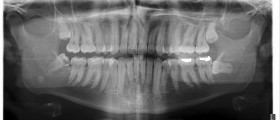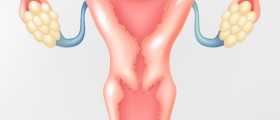
Ovarian cysts are fluid filled pouches that arise from the ovarian tissue. The majority of ovarian cysts are benign and a result of the ovulation process. They are classified as functional cysts. These cysts can spontaneously withdraw within certain period of time. In some cases functional cysts are asymptomatic. However, some women feel their presence and often complain about abdominal pain, abnormalities in menstrual period and some additional symptoms. In case that, a functional cyst has been diagnosed a gynecologist will exam the patient after 1 to 3 months to see whether the cyst has resolved on its own. Some women who suffer from functional cysts that do not resolve in desirable period of time are prescribed birth control pills which eliminate ovulation hence the formation of functional cysts. Not all of the cysts are functional and this is why the very appearance of the cyst on the ultrasonogram will define the following procedures.
Surgery for Ovarian Cysts
If the cyst does not withdraw in a specific period of time or it looks suspicious on the ultrasonogram the doctor can perform laparoscopy and examine the outer look of the cyst. This can also be done by laparotomy. Both of the surgical procedures give excellent insight of the very appearance of the cysts and its relation to surrounding tissues. This way a doctor may notice adhesions, fibroids or infection of the pelvic organs. If there is even slightest chance that cyst is malignant the doctor will perform laparotomy. During these two examinations the doctor can easily remove the cyst. Only if there is suspicion that ovaries have been affected by the cancer the surgeon will remove both of the ovaries.
Both procedures are performed under general anesthesia and the patient can continue with normal activities within few days after the surgery. Still after laparoscopy strenuous activities as well as lifting of heavy objects are forbidden for a while. In case of laparotomy the patient is hospitalized for several days and the recovery time lasts approximately 4 to 6 weeks.
The goal of this surgery is to remove the cyst from the affected ovary. This way after pathohistological examination the definitive diagnosis of the cyst can be either confirmed or ruled out. The cyst can even be confirmed for malignancy.
Indications for Ovarian Cyst Removal
The surgeon will perform removal of the cysts in case that there are multiple cysts on both ovaries, the cyst is bigger than 3 inches or the cyst does not withdraw on its own within three months. Furthermore, this procedure is performed in women who have ovarian growth and have never had a menstrual period, in those who are taking birth control pills as well as in menopausal women.
After the removal of the cysts the ovarian function is preserved. Still some cysts may reoccur after the surgical removal. There is a chance of adhesions and infections after the surgery. And in rather rare cases the bladder or large intestines can be damaged during the procedure.

















Your thoughts on this
Loading...